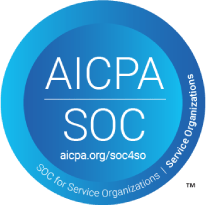Published on August 7, 2019 by Solvaria
What Does End of Support Mean?
As per the policy, after the end of the Extended Support period there will be no patches or security updates, which
may cause security and compliance issues and expose customers’ applications and business to serious security risks. End of support for SQL Server 2008 and 2008 R2 is July 9, 2019.
What are the End of Support Offers for SQL Server and Windows Server 2008 and 2008 R2?
We recommend upgrading to the latest versions of Microsoft software, on-premises or in the Cloud (IaaS and PaaS), to help reduce security risks and continue to get regular security updates.
However, for customers that are not able to transition before the End of Support deadline, there are alternatives to help protect data and applications during the End of Support transition.
Extended Security Updates in Azure: Customers who migrate workloads to Azure virtual machines will have access to Extended Security Updates for both SQL Server and Windows Server 2008 and 2008 R2 for three years after the End of Support deadlines, included at no additional charge over the standard VM pricing.
Eligible customers can also use the Azure Hybrid Benefit to leverage existing on-premises license investments for Windows Server and SQL Server to save on Azure Virtual Machines (IaaS) or Azure SQL Database Managed Instance (PaaS).
Extended Security Updates for On-premises Environments: Extended Security Updates will also be available for workloads running on-premises or in a hosting environment. Customers running Windows Server or SQL Server under licenses with active Software Assurance or Subscription licenses under an Enterprise Agreement enrollment are eligible to purchase Extended Security Updates annually for three years after End of Support. Customers can purchase Extended Security Updates for only the servers they need to cover. This offer replaces Premium Assurance.
What do Extended Security Updates Include?
For SQL Server 2008 and 2008 R2: Extended Security Updates include provision of Security Updates and Bulletins rated “critical” for a maximum of three years after July 9, 2019.
For Windows Server 2008 and 2008 R2: Extended Security Updates include provision of Security Updates and Bulletins rated “critical” and “important,” for a maximum of three years after January 14, 2020.
- This offer does not include technical support, but you may use other Microsoft support plans to get assistance on your 2008 and 2008 R2 questions on workloads covered by Extended Security Updates.
- This offer does not include new features, customer-requested non-security hotfixes, or design change requests. However, Microsoft may include non-security fixes as we deem necessary.
- There is no retroactive effect for any update that the engineering teams declined in the past.
How much will Extended Security Updates cost?
In Azure: Customers running Windows Server or SQL Server 2008 and 2008 R2 in an Azure will get Extended Security Updates for no additional charges above standard VM rates. Customers moving to Azure SQL Database Managed Instance (PaaS) do not need Extended Security Updates, as this is a fully-managed solution.
On-premises: Customers with active Software Assurance or subscription licenses can purchase Extended Security Updates for 75% of the full license cost annually. Customers pay for only the servers they need to cover, so they can reduce costs each year as they upgrade parts of their environment. Contact Solvaria for more details.
Is there a recommended upgrade path for SQL Server 2008 and 2008 R2 or Azure migration?
There are recommendations and best practices for these situations, and Solvaria can help with an initial assessment of your environment. Fill out the form below to learn more about our assessments and your best options to avoid running security risks at the end of support.




